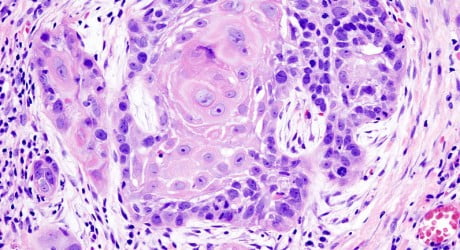With all the research to find a cure for cancer, radiation therapy is still considered by experts to be one of the most reliable forms of treatment in counteracting the disease. In fact, groups like the American Cancer Society list radiation therapy as one of the top treatments for many forms of cancer, along with surgery, chemotherapy, and other common forms of treatment.
Related articles
- Hebrew University Researcher Invents Side-Effect-Free Family Of Drugs
- Will Israeli Technology Put An End To Viral Disease?
Radiation therapy may be effective when it comes to killing cancerous cells, but it also has a devastating side effect — destroying healthy cells as well. As a result, the amount of radiation used is limited and cancerous cells may survive the treatment.
New research by a joint Israeli-Danish team, however, could point the way to a new type of radiation therapy that may help patients avoid the worst side-effects. The technology is called millimeter radiation, and consists of using a specific radiation wavelength when targeting cancerous cells. According to a series of experiments by a team at the Ariel University Center, the treatment significantly limits damage to healthy cells, to the point where doctors are able to “turn up the heat” on cancerous cells and destroy them far more effectively.
Rather than using X-rays, radiation is generated from the sub-millimeter band and aimed at specific cancerous cells, interrupting their ability to grow and reproduce. There is no excess heat to kill healthy cells, so the only cells affected are the cancerous ones.
In a series of experiments performed by the Israeli-Danish team at Ariel University, researchers used the method to irradiate human lung-cancer cells, which are generally extremely resistant to chemotherapy methods, whereas aggressive use of radiation therapy would badly damage the lung.
Using the novel method, the team observed the cancerous cells significantly change their sizes and forms when targeted with the sub-millimeter ray. The cells began to grow to what the researchers said were “monstrous” proportions, but at the same time, the cells’ nuclei began to self-destruct, and to grow a second nucleus — a sure sign that the cells’ DNA had been damaged.
…
To continue reading this article, click here.
Via Times of Israel
Photo by wellcome images
Related posts

Israeli Medical Technologies That Could Change The World

Harnessing Our Own Bodies For Side Effect-Free Weight Loss

Missing Protein Could Unlock Treatment For Aggressive Lung Cancer




Facebook comments